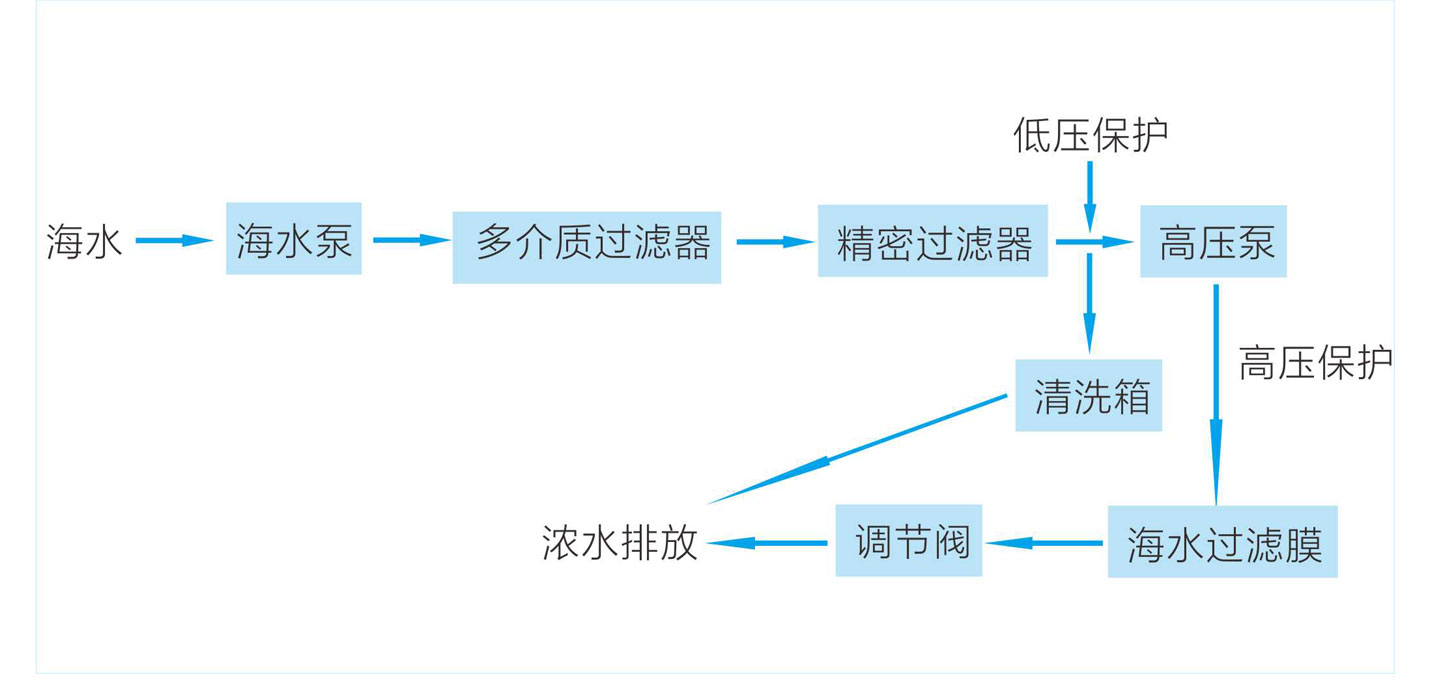
Online customer service for after-sales problems
Contact now
Provide project content that meets your needs
Apply Now
Submit your message
Collaborate now
 E-Mail:
dawatertreatment@gmail.com
E-Mail:
dawatertreatment@gmail.com
Desalination uses seawater desalination to produce fresh water. It is an open source incremental technology to realize the utilization of water resources, which can increase the total amount of fresh water, and is not affected by time, space and climate, and can ensure stable water supply such as drinking water for coastal residents and industrial boiler replenishment. The process of obtaining fresh water from sea water is called desalination. The seawater desalination methods currently used include seawater distillation, reverse osmosis, and ammonium carbonate ion exchange. At present, the application of reverse osmosis membrane method and distillation method is the mainstream in the market. A modern large-scale desalination plant can produce thousands, tens of thousands or even nearly one million tons of fresh water every day. The cost of water is constantly falling, and in some countries it has fallen to about the price of tap water. Desalinated water in some areas reaches the scale of national and urban water supplies.

The reverse osmosis method of seawater desalination treatment: commonly known as ultrafiltration method, is a membrane separation desalination method that was only adopted in 1953. This method separates seawater and freshwater by using a semi-permeable membrane that allows only the solvent to pass through, but not the solute. Under normal circumstances, fresh water diffuses to the seawater side through the semi-permeable membrane, so that the liquid level on the seawater side gradually rises until it stops at a certain height. This process is infiltration. At this time, the static pressure of the water column above the seawater side is called osmotic pressure. If an external pressure greater than the osmotic pressure of the seawater is applied to the seawater side, the pure water in the seawater will reverse osmosis into the freshwater. The biggest advantage of reverse osmosis is energy saving. Its energy consumption is only 1/40 of that of distillation. Therefore, since 1974, developed countries such as the United States and Japan have turned their development focus to reverse osmosis. The reverse osmosis seawater desalination technology has developed rapidly, and the engineering cost and operation cost have been continuously reduced. The main development trend is to reduce the operating pressure of the reverse osmosis membrane, improve the recovery rate of the reverse osmosis system, cheap and efficient pretreatment technology, and enhance the system's anti-pollution ability.
